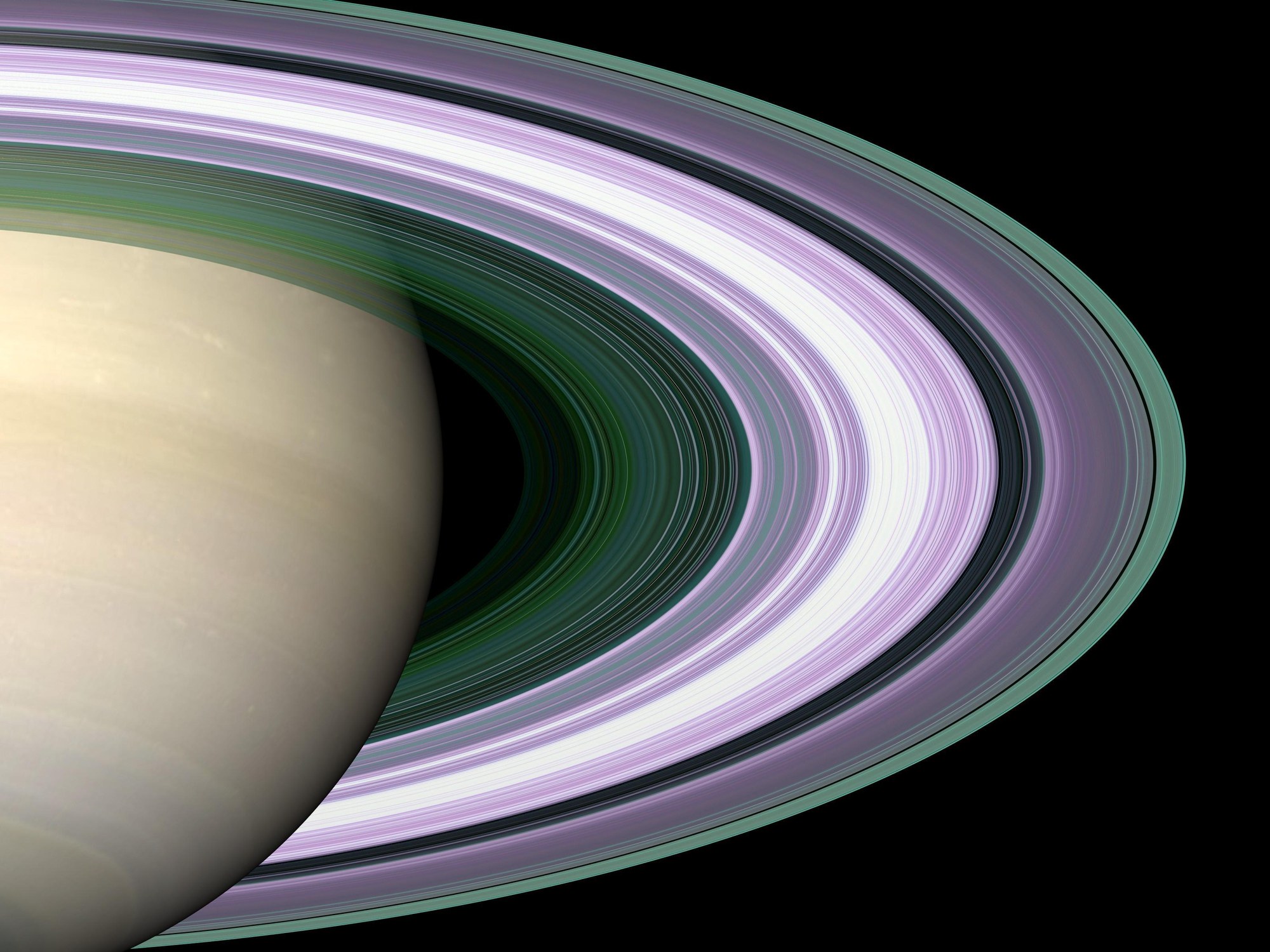Saturn rings
Saturn rings
Image of Saturn's rings. For the first time we are able to see the B-ring, which had, until now, eluded the spacecraft's view. The structure of the B-ring is greatly distinguishable from its two neighbors, the A and C-ring.
This photograph of Saturn's rings was obtained on 3 May 2005, when the Cassini spacecraft was visible from the Earth behind Saturn's rings. Cassini sent radio signals to Earth through the ring system. The researchers were then able to measure how strongly the signal was affected as it passed through the rings. The denser a ring is, the weaker the received signal. This experiment will allow scientists to determine the distribution of ring material and the size of the particles in the rings.
The purple areas indicate regions of the recording, in which there are no particles smaller than five centimetres. The green and blue areas indicate regions containing particles smaller than five and one centimetre. The wide, white area near the centre is the densest region of the B ring.
The origin of Saturn's ring system is still a mystery. It consists of thousands of individual rings. Measured from one side to the other, the ring system is wider than the distance between Earth and Moon. The seven main rings of Saturn are named in order of discovery and not by their distance to the planet. Starting from Saturn, they are referred to as D, C, B, A, F, G and E rings.

